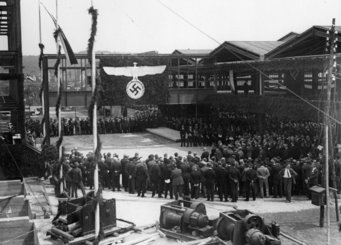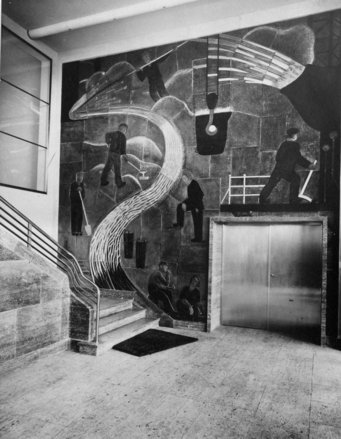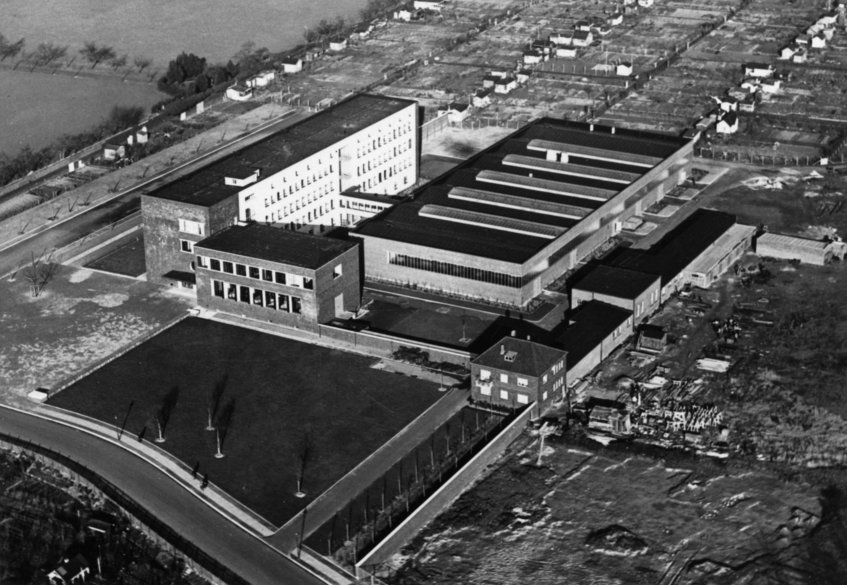04: The new building of the Kaiser-Wilhelm-Institut für Eisenforschung
The former president of the Kaiser-Wilhelm-Gesellschaft, Max Planck, thanked with lofty words the Verein Deutscher Eisenhüttenleute (VDEh) (Association of the German Steel Industry): „The Kaiser-Wilhelm-Gesellschaft feels with joyous pride that the industry has put up a building for it here which task, namely scientific research in the name of the Fatherland, will find a new place that, with regard to its size and facilities, is unsurpassed by any other, be it national or international.“ [1]
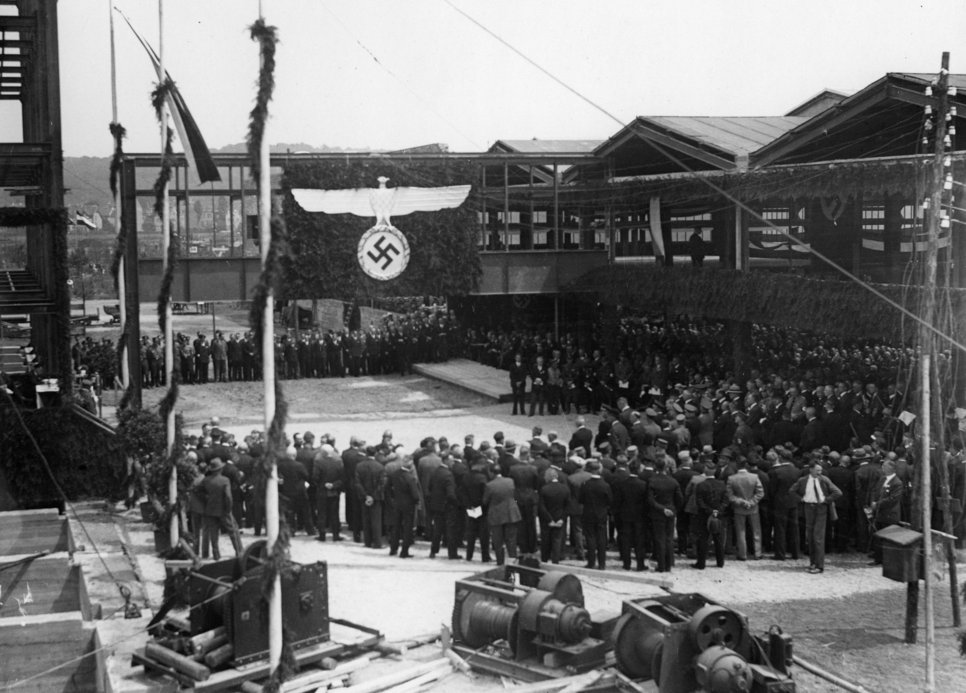
He made his speech on 29th November 1935 on the occasion of the dedication of the new building in Düsseldorf, which has been and still is the home of the Max-Planck-Institut für Eisenforschung (MPIE) since that day.
The attendees of the dedication celebrations included the Reich's Minister of Economic Affairs Hjalmar Schacht, Siegmund Kunisch, Undersecretary of State at the Science Ministry,[2] Gauleiter Friedrich Karl Florian and Major General Emil Leeb of the Heereswaffenamt (the Army's weapons agency)[3] – which was evidence not only for the importance the representatives of the Nazi regimes attributed to the institute in arming the Reich but also for the institute's embeddedness into the Nazi regime.
The new building was designed by Duisburg architect Heinrich Blecken who was, among other tasks, construction director at Vereinigte Stahlwerke.[4] Numerous institutes and laboratories both in Germany and abroad were carefully studied during the planning stage from 1928 onward in order to “utilise all modern experiences for the new institute", as stated in a contemporary account.[5] Due to the world economic crisis, however, the construction plans which by the year 1931 had reached the "ready for building" stage, had to be temporarily postponed. At the end of 1933 there were hints of an improvement in the economic situation and in December of that year, the board of the VDEh finally decided to construct a new building for the institute.[6]
Since Heinrich Blecken had accepted a professorship at the Technical College at Breslau shortly before building commenced, construction management was assigned to Düsseldorf architects Ernst Petersen and Walter Köngeter.
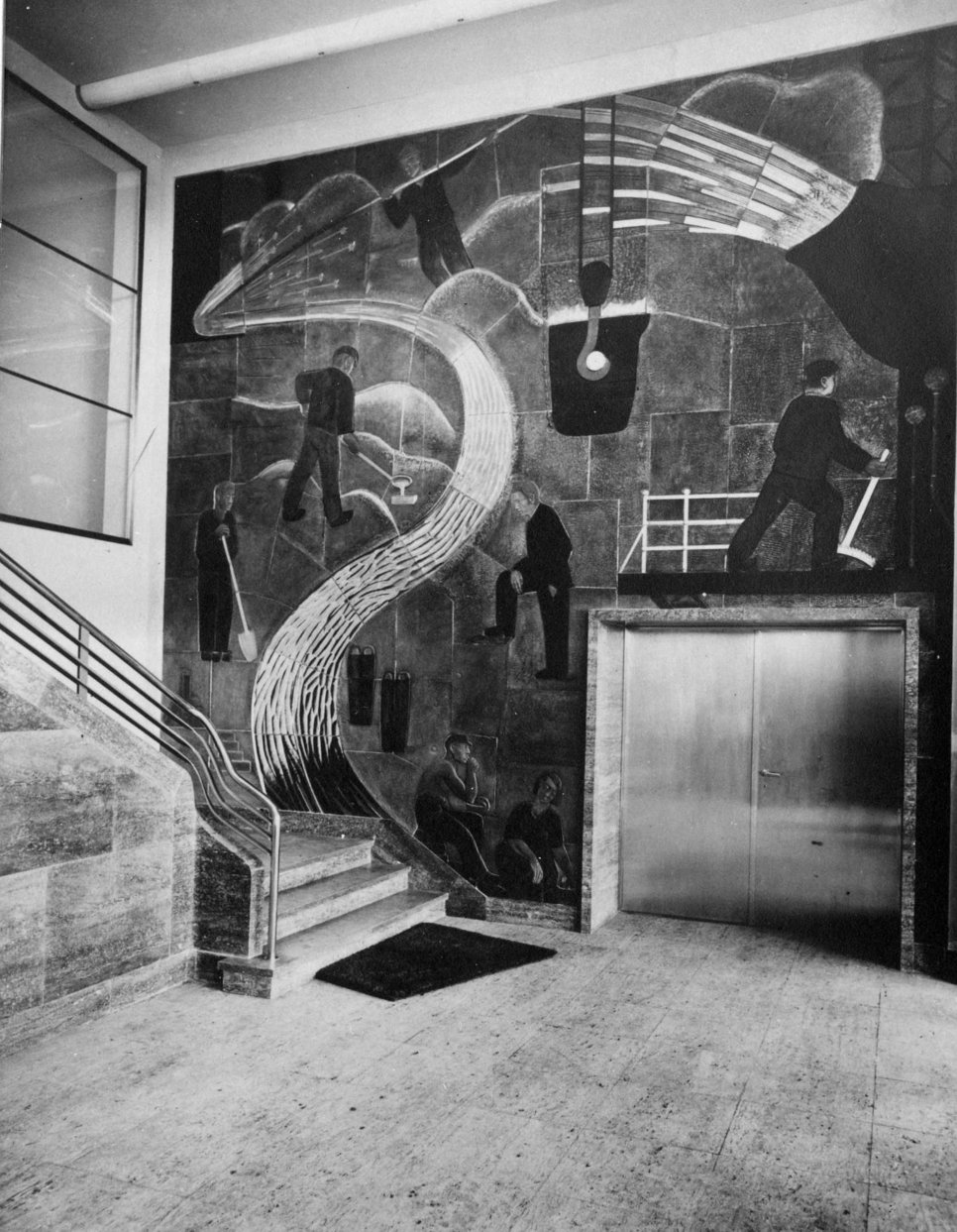
Moreover, the facade design of the main building was significantly influenced by Stuttgart architect Paul Bonatz who had not only designed the old Stuttgart central railway station but in addition became artistic advisor to Fritz Todt when he started building the Reich's motorways from 1935 onward.[7] At the time, the resumption of the construction project was perceived as a major event in the press, as well as in the Nazi organisations. The Düsseldorfer Nazi party newspaper “Volksparole" welcomed the construction of a new KWIE building and anticipated the estimated costs to be almost three million Reichsmarks.[8] For comparison: the construction costs for the autobahn between Cologne and Bonn - today the Autobahn no. 555 - which was built between 1929 and 1932 amounted to 8.6 million Reichsmarks.[9]
In February 1934, the construction of the new institute building on the 80,000 m² site in Düsseldorf-Düsseltal began.[10] In September 1935, after a construction period of only eighteen months, all departments of the KWIE were able to move into the new building. When the building was inaugurated with a grand ceremony on 29th November 1935, the institute with all its laboratories and workshops was fully operational.[11] The four-storey steel frame main building with an adjacent wing had a facade with brick facework. After all the makeshift solutions of the previous years, the institute now boasted a state-of-the-art working environment.
The unpretentious cubic brick building with its horizontal ribbon windows and its tubular steel interior fittings stood in the architectural tradition of the Bauhaus design of the 1920s and thus represented the classical modern style in Germany.[12]
Overall, the guiding principle in the clear design of the building had been its expediency for the work of the institute.[13] All the same, the aesthetic design of the building was not neglected, either. Düsseldorf artist Erich Kuhn created a wall relief with a symbolic presentation of iron and steel technology for the entrance hall which has been an eye-catcher for visitors to this day. The main building which was largely protected against shocks accommodated not only chemical, physical and metallographical laboratories equipped with sensitive precision instruments but also rooms for general use, a library and a filing department, administrative offices as well as a large reading room.[14]
A hall construction with seven aisles separated from the main building was built to accommodate those laboratories and workshops whose machines and fixtures caused vibrations or whose operation generated emissions of smoke, dust or noise. Another part of the institute compound was formed by a small group of buildings consisting of the so-called "Schwingungshaus", a vibration house for executing mechanical vibration endurance tests, crew rooms for the staff working at the halls, garages, stores and a residential building for the officials working for the institute.[15]
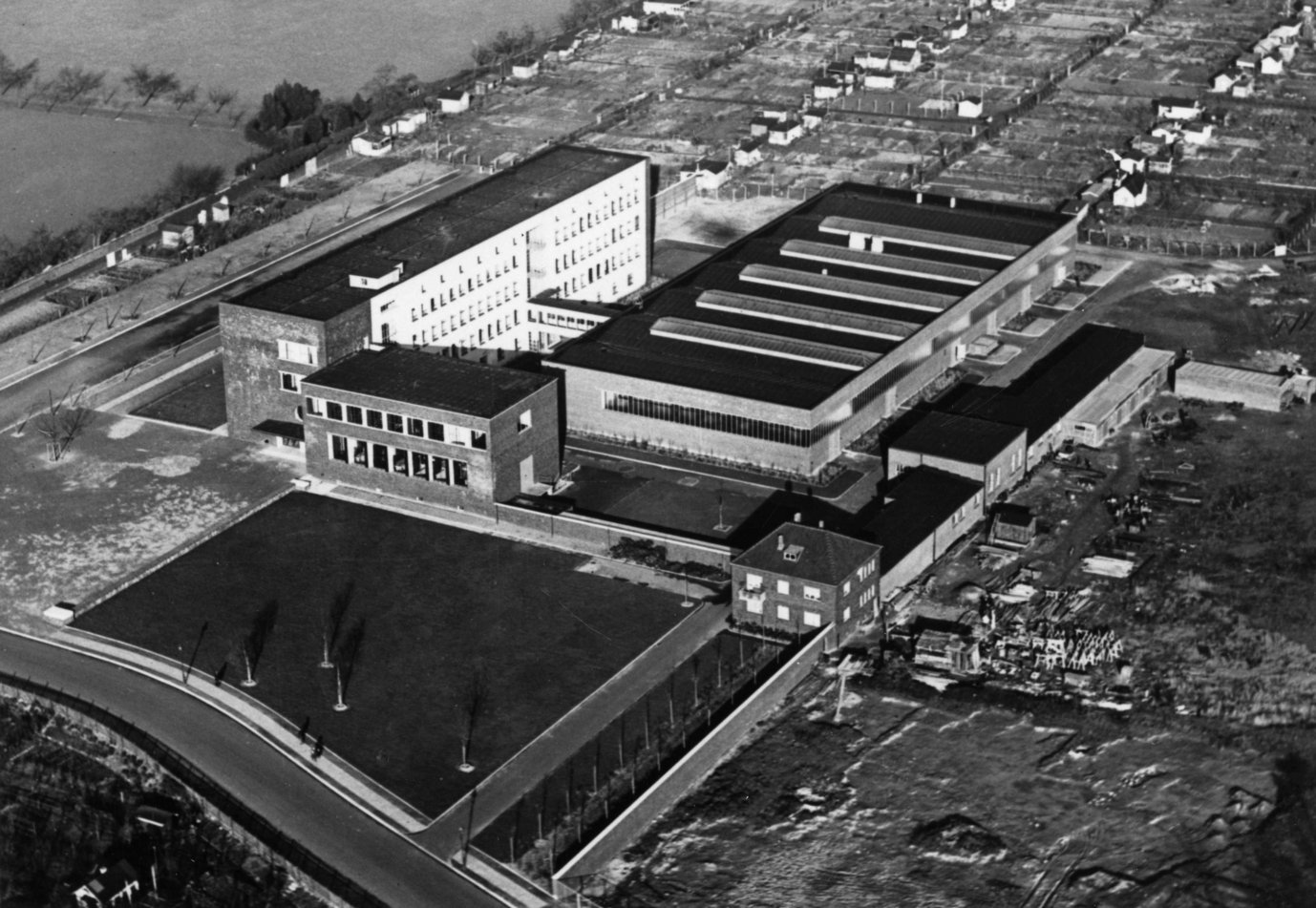
What happened so far... Read how the story continues...
[1] „Die Einweihung des Neubaues des Kaiser-Wilhelm-Instituts für Eisenforschung“, in: Stahl und Eisen, issue no. 50, 12th December, 1935, p. 1491-1497, p. 1495
[2] Its complete name is: Reichsministerium für Wissenschaft, Erziehung und Volksbildung.
[3] „Die Einweihung des Neubaues des Kaiser-Wilhelm-Instituts für Eisenforschung“, p. 1492 f.
[4] Körber, Friedrich: Der Neubau des Kaiser-Wilhelm-Instituts für Eisenforschung (treatise 315), in: Körber, Friedrich (publ.): Mitteilungen aus dem Kaiser-Wilhelm-Institut für Eisenforschung zu Düsseldorf, vol. 18, treatise 294-315, Düsseldorf, 1936, p. 253-313, p. 253.
[5] Dönges, Wilhelm: Geschichte und Entwicklung des Kaiser-Wilhelm-Instituts für Eisenforschung zu Düsseldorf, in: Mitteilungen aus dem Kaiser-Wilhelm-Institut für Eisenforschung zu Düsseldorf, vol. XXV, Düsseldorf 1942, S. 14.
[6] „Der Neubau des Kaiser-Wilhelm-Instituts für Eisenforschung“, in: Meine Heimat (Kunst- und Heimatzeitschrift für das bergisch-niederrheinische Gebiet), January, 1936, p. 33-34, p. 33.
[7] Körber, Der Neubaus des KWIE, p. 313; on Bonatz et al.: May, Roland: Von der Ingenieursästhetik zur Monumentalarchitektur. Der Brückenbau der Reichsautobahnen und der Architekt Paul Bonatz, in: Harlander, Tilman/Pyta, Wolfram (publ.): NS-Architektur: Macht und Symbolpolitik, 2nd edition Berlin, 2002, p. 193-210.
[8] „Der Bau des Eisenforschungsinstitut gesichert“, in: Volksparole, 16th Nov., 1933.
[9] https://www.strassen.nrw.de/projekte/a555.html (12th Nov., 2016)
[10] Ibid., p. 257 and 313.
[11] Generalverwaltung der Max-Planck-Gesellschaft zur Förderung der Wissenschaften e.V. (publ.): Jahrbuch der Max-Planck-Gesellschaft zur Förderung der Wissenschaften e.V. 1961 part II, Göttingen, 1962 (?), p. 232.
[12] Flachowsky, Sören: Das Max-Planck-Institut für Eisenforschung Düsseldorf; in: Gruss, Peter; Rürup, Reinhard (publ.): Denkorte. Max-Planck-Gesellschaft und Kaiser-Wilhelm-Gesellschaft: Brüche und Kontinuitäten 1911-2011, Dresden 2010, p. 128-135, p. 130.
[13] Meine Heimat, January, 1936, p. 33.
[14] Generalverwaltung MPG (publ.): MPG yearbook 1961, p. 232; Meine Heimat, January, 1936, p. 34.
[15] Meine Heimat, January, 1936, p. 34.
